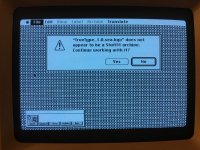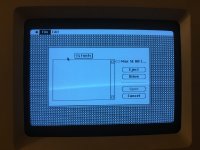Sorry for the delayed response. I had another problem arise - the 100 MB volume on the FloppyEmu that I use with the SE was almost full, so I had to create a new 224 MB volume. After sorting one issue out (the downside to playing with these machines late at night) I ended up doing a proper 6.0.8 install, which installed all of the system fonts anyways. It also "unlocked" the full control panel, which is nice.
Tomorrow (or later today?) I'll try installing some "custom" fonts, as well as installing the INIT to enable TrueType capabilities under System 6. I already do a lot of "prep work" with Mini vMac as I can have multiple images/volumes from the FloppyEmu open at one time. I'll also test out the binary file decoding capabilities of ImportFl. (I use ImportFl a bit, but never knew it had that capability. You learn something new every day... except I'm learning a lot with playing around with these Macs.)
System 7 will run on the Classic, but I haven't thoroughly tested it. I actually tried to run SoftPC in System 7.1 earlier on the Classic (failed), and then proceeded to run Word 4.0 in 7.1. Word works fine but there were some weird video issues at one point, and System 7 seems to eat quite a bit of memory. (With Word 4.0 open, I couldn't even open the brightness control panel due to "not enough memory.") The Classic only has 2 MB of memory, so it barely meets the minimum system requirements for System 7. With that said, System 6 seems to run a lot smoother and is more appropriate for the machine.
P.S./Tangent - I have an additional 2 MB memory expansion kit for the Classic, with two 1 MB SIMMs for the memory expansion daughter card. Unfortunately, every time I install them and power on the machine, the machine won't boot (won't even chime) and shows garbled video momentarily before going to a blank display. The SIMMs may be bad (I did accidentally drop them one time while trying to install them - oops) or I may not be installing them properly. (Sounds dumb - but maybe I'm not getting them seated properly? I'm always nervous I'm going to damage the socket. With each attempt, I have made sure to move the jumper to the "SIMM INSTALLED" position.)



